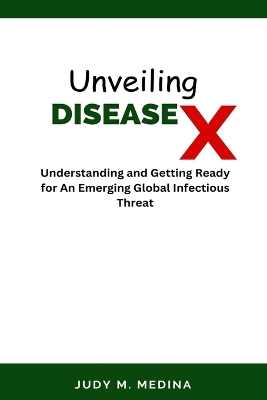General and Systematic Veterinary Virology
by Varsha Sharma and Anju Nayak
Connect Access Card for Microbiology
by Joanne Willey, Kathleen Sandman, and Dorothy Wood
Combo: Microbiology: A Systems Approach with Morello Lab Manual
by Marjorie Kelly Cowan
'This is an important book. You can't understand the radical cheapening of food, with all its unpleasant effects, for farm animals and our most cherished rural landscapes, until you begin to understand the industrialisation of chicken. Industrial chicken is now displacing many more sustainable farming systems, driving them out of business. This book explains how that happened and why we should all be worried about it and demand change' James Rebanks, author of The Shepherd's LifePlucked! examine...
Profiles of the Vaccine-Injured (Children's Health Defense)
by Children's Health Defense and Robert F Kennedy
Are vaccine injuries really “one in a million,” as governments and public health experts constantly tell us? This comprehensive look at the evidence by Children’s Health Defense, illustrated by nine real-life stories of serious vaccine injury, exposes health agencies’ soft-pedaling of vaccine risks as a dangerous lie. For most people, the potential risks of vaccination, which include life-changing illness, family bankruptcy, and even death, are invisible and almost inconceivable—until a vacc...
'A perfect blend of cutting-edge science and compelling storytelling. Daniel Davis has a rare knack for making complex science comprehensible and thrilling' BILL BRYSON Welcome to a revolution in the science of you. Recent and dramatic breakthroughs in our understanding of the body will profoundly change the experience of being human in the coming century. Already they are opening up boundary-breaking possibilities for intervention at every level, from our brains and genes to our microbiomes...
The Stealthy Viral Pimpernal
by Bernard (Bernie) Heys MCMI Ciwfm Dipbs
This book was written during a period when the technologies of genetic engineering were being applied to the study of animal viruses and when the organization and function of individual virus genes were being elucidated. This book, which uses human and animal viruses as models, aims to under stand the developments in molecular virology during the last 20 years. Al though molecular virology could also be taught by means of bacteriophages or plant viruses, the advantage of using animal viruses i...
Die Virosen an Landwirtschaftlichen Kulturen, Sonderkulturen Und Sporenpflanzen in Europa
Food Safety and Toxicology (de Gruyter Textbook)
by Oluwatosin Ademola Ijabadeniyi and Omotola Folake Olagunju
Life in Our Phage World
by Forest Rohwer, Merry Youle, and Heather Maughan
Arenaviruses II (Current Topics in Microbiology and Immunology, #263)
Viruses are studied either because they cause significant human, animal or plant disease or because they are useful materials for probing basic phenomena in biology, chemistry, genetics and/or molecular biology. Arenaviruses are unusually interesting in that they occupy both categories. Arenaviruses cause several human diseases known primarily as the hemorrhagic fevers occurring in South and Latin America (Bolivia: Machupo, Argentine, Junin virus, and Brazil: Sabia virus) and in Africa (Lassa fe...
50 Preguntas Y Respuestas Sobre El Coronavirus - Covid19
by Ivan Sanz Munoz, Jose Maria Eiros Bouza, and Sonia Tamames Gomez
Annexins (Molecular Biology Intelligence Unit)
The Annexins is focused on a specific family of calcium and membrane-binding proteins, annexins, ubiquitously spread within living organisms, including animals, plants and fungi. The volume covers important areas of annexinology. The characterization of structural-functional relationship within the annexin family of proteins, together with emerging transgenic animal models, provides an up-to-date overview of potential physiological roles of annexins. Growing evidence of participation of annexins...
Aspects of Slow and Persistent Virus Infections (New Perspectives in Clinical Microbiology, #2)
This book records the papers and discussions at a Work shop which took place in London on the 5th and 6th of April 1979, as part of the programme of the Commission of the European Communities on Medical and Public Health Research. However the views expressed are those of the individuals concerned and not of the EEC or any of its organs. The object was to discuss certain biological aspects of natural and experimental slow virus infections. Because the amount of knowledge and the focus of interes...
Molecular Aspects of Papovaviruses (Developments in Molecular Virology, #9)
It is almost twenty years since the first DNA tumor virus meeting was held at Cold Spring Harbor. At this meeting studies on three tumor viruses were discussed: the papovaviruses, the adenoviruses and the herpesviruses. The present series Developments in Molecular Virology chose to reverse this sequence by first publishing books on the herpesviruses, followed by adenoviruses, and only now the papo vaviruses. All the DNA tumor viruses gained their original reputation by serving as model systems...
Connect Access Card for Lab Manual for Microbiology Fundamentals
by Steven Obenauf
On July 22, 2009, a special meeting was held with twenty-four leading scientists at the National Institutes of Health to discuss early findings that a newly discovered retrovirus was linked to chronic fatigue syndrome (CFS), prostate cancer, lymphoma, and eventually neurodevelopmental disorders in children. When Dr. Judy Mikovits finished her presentation the room was silent for a moment, then one of the scientists said, "Oh my God!" The resulting investigation would be like no other in science....

















